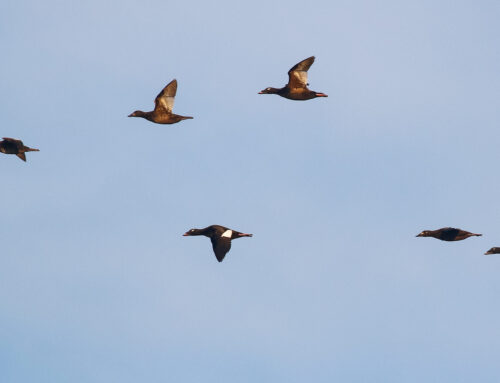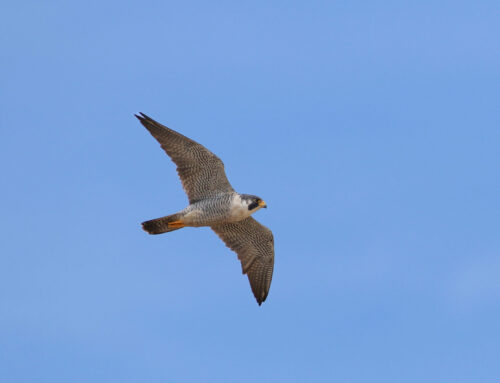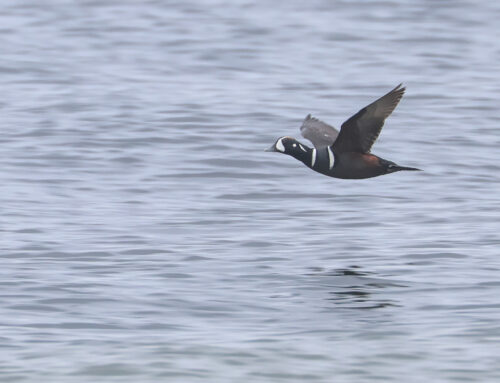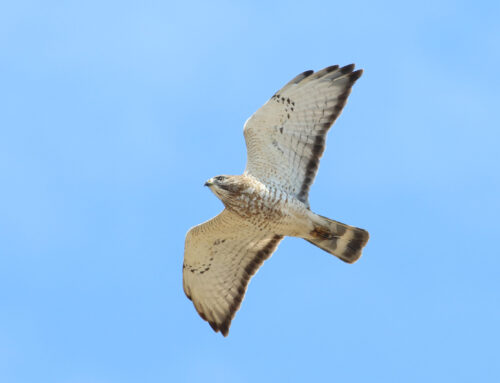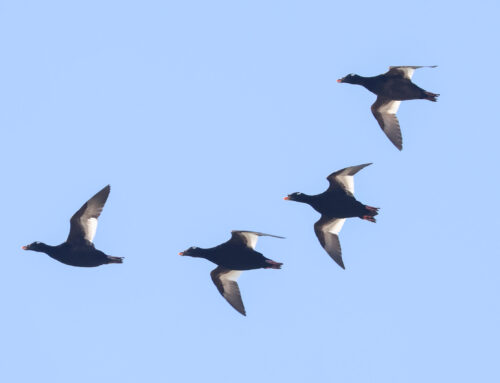Seasons are marked by change. Be it fall colors, winter snow, or spring blossoms, we anticipate the treasures they bring into our lives. The wildlife around us is constantly in motion as their lives are dictated by these annual cycles. For birds, we associate every season with a behavior. Spring means northbound migration, summer means breeding, fall is time for southbound migration, and in winter we get a different suite of seasonal residents. This last week at Whitefish Point, the waterbird movement has slowed down considerably, but there has been a lot of activity. The past few days, we’ve seen many of our anticipated winter birds show up, some in large numbers.
Birds are always busy. A typical migrating bird has to get ready for the trying feat of migration, make an epic journey, establish a territory on a breeding ground, find a mate, build a nest, care for the nest, care for the young, get ready for migration, migrate, and then survive on the wintering grounds. We’re lucky to see so many birds at the Point at different phases of this cycle, yet there is something special about when the winter birds show up. When they do, we know it’s likely they’ll be around for the season. It’s like getting new roommates, ones that you like.
This brings us to our winter residents. For birders, the movement and distribution of finches(and relatives) is a much-anticipated winter element. This movement of these seed-eaters is predicted by the winter finch forecast, which utilizes information about the seed-crop in different regions to predict the abundance and distribution of the birds that use these resources. Thus far, we’ve seen large numbers and varieties of winter birds already at the Point, some of which were virtually absent last year. It’s early November, and we already have seen most, if not all, of our expected winter finches at the Point.

Reports of Evening Grosbeaks Aug-Nov 2020 courtesy of eBird
Let’s take the Evening Grosbeak as an example. These incredibly beautiful and charismatic birds are one of the most anticipated at backyard feeders every winter. So far this year, they’re showing up all over Michigan and well into the south. Quite a few have already shown up as far south as North Carolina, and there is even a report on Oct. 3 from the Florida panhandle! Last year, species such a Red-breasted Nuthatch and Pine Siskin weren’t widely reported in large numbers in the southeastern U.S.; this year, we have already seen sizable numbers show up. My birding listserv back home in North Carolina has been full of posts about siskins emptying backyard feeders (one birder counted over 200 in their yard!) while we had almost none last year.
All this activity and we’re nowhere close to the end of it. This week we’ve been lucky to have a beautiful assortment of our winter birds: Bohemian Waxwings, Pine Grosbeaks, Common (and one Hoary!) Redpolls, and crossbills, to name a few. Though the majority of the fall waterbird migration has ended, the Point is still vibrant and alive. Brightly colored and patterned songbirds are calling at our feeders, and the woods periodically erupt with these beauties. The seasons are in flux, and the birds are actively telling that story.
Text and photo by Fall Waterbird Counter Steve Backus


